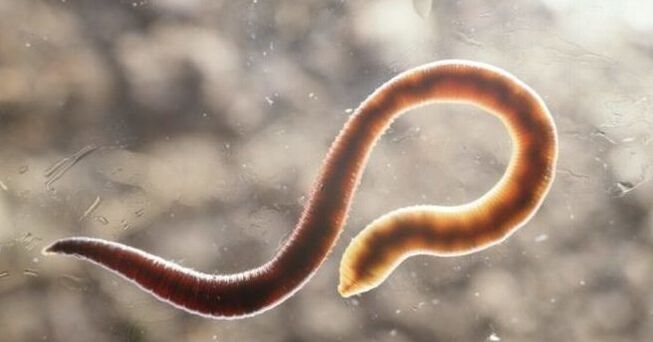How to understand the presence of parasites in the body? Many people don't even think about such a question, of course, in vain. It must be understood that those living in the human body lead to the development of many quite dangerous diseases. It is for this reason that preventive checks and special tests are recommended.
General characteristics of parasites
The presence of such organisms can be present in any part of the body, and the more they are present in a particular organ, the worse it is in general. In addition to internal organs, the presence of parasite vital activities can also be observed in the skin, tissues and mucous membranes. This type of pathogen feeds on food that people eat.

There are only two types of parasites, depending on where they live in the human body:
- The vital activities of endoparasites are observed directly in the body itself, that is, in internal organs and systems. These include Echinococcus, Giardia, viruses, various types of fungi.
- The vital activity of ectoparasites is observed on the superficial layer of the body, the skin. These absorb blood and human cells. External parasites include lice, mites, bed bugs.
The adult body is designed to prevent penetration and eliminate the vital activities of certain parasites. For example, when saliva is produced in the mouth, enzymes are formed that prevent the worms from multiplying and laying eggs.
The action of the enzyme in this situation is destructive. The protective function is performed by the acid environment of the stomach as well as the body's immunity. In children, the protective barrier against parasites may not work at all, which could be explained by an immune system that is not yet fully formed. It is the low immunity that leads to the penetration and reproduction of pathogenic microorganisms.
According to numerous studies, some types of parasites do not succumb to the body's protective barrier, entering and destroying it without obvious symptoms and signs. The duration of the incubation period (the moment it enters the body - the first symptoms) can reach several years, during which a person lives a normal life, unaware of the presence of the parasite.
There are several ways to find out if you have parasites in your body, but first, you need to monitor your health carefully, don't ignore any, even the slightest changes and symptoms, and contact a specialist immediately.
Diseases and pathological conditions that indicate the presence of parasites in the body
You can check for parasites in your body by the following signs and symptoms:
- bowel disorder. This includes frequent constipation and diarrhea. If the parasite is located in the bile ducts or intestinal ducts and blocks them with their large size, this can cause rare and difficult bowel movements. Some pathogenic microorganisms produce a hormone-like substance that causes frequent diarrhea. Therefore, diarrhea is not only considered a protective response of the body to eating the "wrong" food, but also a sign of a parasitic infection in the body.
- flatulence. Increased gas formation and bloating are symptoms of the presence of parasites in the small intestine, which are responsible for the development of inflammatory processes. Signs of flatulence will be observed until the person's worms are cured.
- "Irritable Bowel"A similar syndrome is the result of the irritation of the intestinal wall by the parasite and the inflammatory process it causes. At the same time, various symptoms of disruption of the gastrointestinal tract appear, with reduced absorption of all nutrients, including fat. If the small intestine can't absorb fat, it starts seeping into thicker areas, causing cramping, constipation, and diarrhea.
- joint and muscle painOften, the parasite is located in the muscles and joints, causing pain and people confuse it with arthritis.
- allergic reactionAs the worms release toxic substances excessively, the immune response is activated in the body by producing increasing doses of protective cells called eosinophils. These cells become responsible for the development of inflammatory processes in the tissue, which in turn cause allergic reactions.
- skin diseaseSymptoms in this condition can manifest as hives, rashes of various types, eczema, skin ulcers, tumors, papillomas. After worms are found in the gut, acne, seborrhea, various spots and wrinkles can appear, causing damage to the skin.
- chronic fatigueSymptoms in this condition are as follows: persistent general malaise, apathy, depression, poor memory. These signs can be explained by violations of absorbing nutrients from food.


Diagnosis of internal parasites
It is not enough to identify the obvious symptoms of the presence of parasites. Their presence and treatment methods also need to be confirmed. How to identify parasites in the human body at rest? These assays can be performed either in the laboratory or with the help of equipment. Laboratory methods for diagnosing worms include:
- microscope. The most common method for detecting worms. During diagnosis, human feces are examined for the presence of eggs of such organisms. Worm eggs are not always identifiable after the first analysis. In some cases, several procedures are required.
- Serological studiesThe study, which has been tested over the years, has become one of the most popular ways to check the blood for antibodies and antigens to various infections. In any case, the body's immunity responds to the invading pathogenic microorganisms. This type of diagnosis includes tests such as immunofluorescence, polymerase chain reaction, enzyme immunoassay, etc.

Hardware methods for diagnosing endoparasites include:
- Ultrasound is done to detect echinococcosis in the body.
- X-rays to detect parasites, such as the lungs.
- Endoscopy and biopsy. A similar type of diagnostic is prescribed to detect worms in internal organs, followed by tissue sampling for study.
Eliminate internal parasites
How to determine the presence of internal parasites, found. It's worth considering ways to eliminate them now. Treatment of parasitic infections is carried out in three stages.
Phase 1 - Preparation
During this time, the body must prepare for the main treatment:
- Prescribe the use of adsorbents, which help to cleanse the body and reduce the manifestation of symptoms of poisoning;
- From the choleretic agents, it is worth emphasizing the preparations based on extracts of Amaryllis flowers and ox bile;
- To get rid of cramps, you can drink herbal soups such as St. John's wort, wild rose, valerian, etc. throughout the day;
- Enzyme preparations are also recommended.
Stage 2 - Deworming
The main antiparasitic treatment involves taking special medicines prescribed by a specialist. Dosage should only be determined by a doctor, as such drugs are highly toxic and may be harmful to health if more than required.
Often, bioactive additives are also used, the composition of which contains bitter herbs that have an anthelmintic effect on the body. Supplements have fewer side effects and do not disrupt the function of organs such as the liver.
Phase 3 - Recovery period
At this time, it is necessary to take probiotics and prebiotics to restore the normal function of the gastrointestinal tract. Treatment with vitamin complexes, enzymes, hepatoprotectants is also recommended, which will help normalize the activity of organs such as the liver, gallbladder, and pancreas.
Only complex treatments help to get rid of not only parasites in general, but also the negative consequences of their life activities.






































